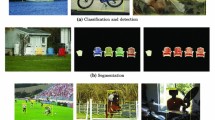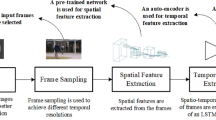Abstract
A black hole is a region of space that has so much mass concentrated in it that there is no way training data for a nearby object to escape its gravitational pull. In this paper we are inspired by this phenomenon to create a new form of novelty detector. We consider the of a given class as a black hole. For multi-class data we are dealing with multiple black holes. A test point is pulled by the centroids of different black holes as well as its K nearest neighbours. The gravitational pull is modelled as an iterative process, where the forces acting on a point are constantly changing with time as the test point moves in multi-dimensional space corresponding to these forces. Once the algorithm has converged, a thresholding scheme is applied to determine whether the test point has been pulled within the boundary of the black hole or not. Any points that lie outside all known black holes are deemed to be novel. We compare this novelty detector with other well-known models of novelty detection on a video analysis application and show very promising results.



Similar content being viewed by others
References
Augusteijn MF, Folkert BA (1999) Neural network classification and novelty detection. International Journal of Remote Sensing
Bezdek J, Ehrlich R, Full W (1984) FCM: The fuzzy c-means clustering algorithm. Comput Geo Science 10(2):191–203
Bishop C (1995) Neural networks for pattern recognition. Oxford University Press
Bishop C (1994) Novelty detection and neural network validation. In: Proc IEE Conf. on vision and image signal processing, 217–222
Byungho H, Sungzoon C (1999) Characteristics of auto-associative MLP as a novelty detector. In: Proc IEEE IJCNN Conf. 5:3086–3091
Davies DL, Bouldin DW (1979) A cluster separation measure. In: IEEE Trans on pattern analysis and machine intelligence 1(2)
Diaz I, Hollmen J (2002) Residual generation and visualization for understanding novel process conditions. In: Proc IEEE IJCNN Conference, 2070–2075
Drimbarean A, Whelan PF (2001) Experiments in colour texture analysis. In: Pattern recognition letters 22:1161–1167
Duda RO, Hart RE, Stork DG (2001) Pattern classification, 2nd edn. John Wiley
Dunn JC (1973) A fuzzy relative of the ISODATA process and its use in detecting compact well-separated clusters. J. Cybernetics 3:32–57
Fleck MM, Forsyth DA, Bregler C (1996) Finding naked people. In: ECCV 2:592–602
Ford, Roberts A (1998) Colour space conversions. In: Tech Report University of Westminster
Haralick RM, Shanmugam K, Dinstein I (1973) Textural features for image classification. In: IEEE Trans on systems, man and cybernetics 3(6):610–621
Huang J, Kumar S, Mitra M, Zhu WJ, Zabih R (1997) Image indexing using colour correlogram. In: Proc of IEEE Conf on comput. Vision and pattern recognition, 762–768
Japkowicz N, Myers C, Gluck M (1995) A novelty detection approach to classification. In: Proc of 14th IJCAI Conf, Montreal, 518–523
Ko H, Jacyna G (2000) Dynamical behavior of autoassociative memory performing novelty filtering. IEEE Trans on neural networks 11(5):1152–1161
Kohonen T (1988) Self-organisation and associative memory. Springer-Verlag, Berlin
Kohonen T (2001) Self-organising maps. Springer, Berlin
Kundu S (1999) Gravitational clustering: a new approach based on the spatial distribution of the points. In: Pattern recognition 32:1149–1160
Laws KL (1980) Texture image segmentation. USCIPI Rep 940, University of Southern California
LeCun Y et al (1990) Handwritten digit recognition with a back-propagation network. In: Advances in neural information processing systems, Morgan Kaufman, 2:396–404
Linde Y, Buzo A, Gray RM (1980) An algorithm for vector quantizer design. In: IEEE Transactions on Communications 28(1):84–95
Lloyd SP (1982) Least squares quantization in PCM. In: IEEE Trans information theory 28:129–137
Lou Z, Liu K, Yang JY, Suen CY (1999) Rejection criteria and pairwise discrimination of handwritten numerals based on structural features. In: Pattern Analysis and applications 2(3):228–238
Manevitz LM, Yousef M (2000) Learning from positive data for document classification using neural networks. In: Proc 2nd workshop on knowledge discovery and learning, Jerusalem
Markou M, Singh M, Singh S (2001) Neural network analysis of Minerva scene analysis benchmark. In: Proc 11th international conf. on image analysis and processing, Italy
Markou M, Singh M, Singh S (2002) Colour texture analysis of natural scene using neural networks. In: Proc international IEEE/INNS joint conf. on neural networks, Hawaii
Markou M, Singh S (2003a) Novelty detection: a review, part I: statisticalapproaches. Signal processing 83:2481–2497
Markou M, Singh S (2003b) Novelty detection: a review, part II: neural network based approaches. Signal processing 83:2499–2521
Markou M (2005) Models of novelty detection based on machine learning. PhD Thesis, Department of Comput. science, University of Exeter, Exeter, UK
Markou M, Singh S (2004) Feature selection based on a Black Hole model of data reorganization. In: 17th International conf. on pattern recognition (ICPR’04), Cambridge, pp 565–568
Mindru F, Moons T, VanGool LJ (1999) Recognizing color patterns irrespective of viewpoint and illumination. In: Proc CVPR’99, 368–373
Nabney IT (2002) Netlab: Algorithms for pattern recognition. Springer-Verlag, Berlin
Petsche T, Marcantonio A, Darken C, Hanson SJ, Kuhn GM, Santoso I (1996) A neural network autoassociator for induction motor failure prediction. Advances in NIPS 8:924–930
Plataniotis KN, Venetsanopoulos AN (2000) Colour image processing and applications. Springer-Verlag
Ryan J, Lin MJ, Miikkulainen R (1998) Intrusion detection with neural networks. In: Jordan M et al (eds) Advances in Neural Information Processing Systems 10. MIT Press, pp 943–949
Singh S, Markou M (2000) Learning and adaptation in scene analysis tasks using neural networks. In: Proc 6th International conf. on control, automation, robotics and vision, Singapore
Singh S, Markou M, Haddon JF (2000a) Natural object classification using artificial neural networks. In: Proc IEEE International joint conf. on neural networks, Como, Italy, 3:139–144
Singh S, Markou M, Haddon JF (2000b) Detection of new image objects in video sequences using neural networks. In: SPIE Conf. on applications of artificial neural networks in image processing, pp 204–213
Singh S, Singh M, Markou M (2003) A comparison of feature extraction methods for scene analyzis. Workshop on artificial neural networks in pattern recognition, Italy, pp 108–113
Singh S, Markou M (2004) An approach to novelty detection applied to the classification of image regions. IEEE Trans Knowl Data Eng 16(4):396–406
Song SO, Shin D, Yoon ES (2001) Analysis of novelty detection properties of Auto-Associators. In: Proc COMADEM, 577–584
Sonka M, Hlavac V, Boyle R (1999) Image processing, analysis, and machine vision. (PWS Press)
Surace C, Worden K (1998) A novelty detection method to diagnose damage in structures: an application to an off-shore platform. In: Proc 8th conf. of off-shore and polar eng 4:64–70
Surace C, Worden K, Tomlinson G (1997) A novelty detection approach to diagnose damage in a cracked beam. In: Proc of SPIE 3089:947–953
Terrillon JC, Pilpre A, Niwa Y, Yamamoto K (2002) Analysis of a large set of colour spaces for skin pixel detection in colour images. In: 6th International conf. on quality control by artificial vision
Terrillon JC, Pilpre A, Niwa Y, Yamamoto K (2003) Analysis of a large set of colour spaces for skin pixel detection in colour images. In: 6th International conf. on quality control by artificial vision
Thompson BB, Marks RJ II, Choi JJ, El-Sharkawi MA, Huang M, Bunje C (2002) Implicit learning in auto-encoder novelty assessment. In: Proc Int’l Joint conf. on neural networks, 2878–2883
Umbaugh SE (1998) Computer vision and image processing: a practical approach using CVIPtools
Unser M (1986) Local linear transforms for texture measurements. Signal Processing 11:61–79
Vesanto J, Alhoniemi E (2000) Clustering of the self-organising map. IEEE Trans on networks 11(3):586–600
Author information
Authors and Affiliations
Corresponding author
Appendix
Appendix
Rights and permissions
About this article
Cite this article
Singh, S., Markou, M. A black hole novelty detector for video analysis. Pattern Anal Applic 8, 102–114 (2005). https://doi.org/10.1007/s10044-005-0248-3
Received:
Published:
Issue Date:
DOI: https://doi.org/10.1007/s10044-005-0248-3




